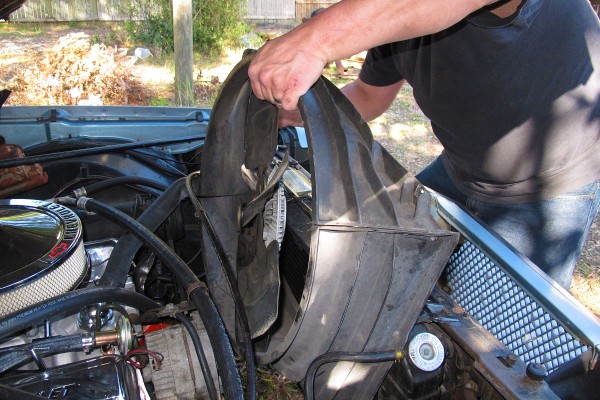If you’ve got a pre-1988 small block Chevy and are tired of that massive, ugly looking factory accessory drive—the one with the heavy air conditioning compressor, unattractive alternator, power steering pump, and rusting iron water pump—then it’s time to step up to a serpentine drive system. Summit Racing has a whole line of polished aluminum serpentine conversion kits that deliver the attractive, uncluttered appearance of a serpentine system and include lighter, more-efficient accessories—all without the budget-killing price tag.
A major benefit of this kit is the weight savings it provides while also opening up a lot of space in the engine compartment. Using a bathroom scale and some guesstimation, we figure this accessory conversion took about 50 pounds off the front end. We also picked up some horsepower between the kit’s more-efficient accessories and losing the engine-driven clutch fan in favor of an electric unit. As a bonus, this serpentine conversion kit also makes installation of headers much easier since nothing is using the exhaust manifolds as a mounting point.
We had access to a 1976 El Camino with the factory air and the factory accessory drive still in place. It made for a good test subject to show off the installation and benefits of the Summit Racing small block Chevy serpentine conversion kit. Installation was very easy. With all the parts in hand, we accomplished the task in a single day. Follow along as we show you how.
Parts Used
Summit Racing Complete Serpentine Belt System
Summit Racing Remote Power Steering Reservoir
Summit Racing Remote Power Steering Hose Kit
Summit Racing High Output Electric Cooling Fan
Summit Racing Universal Fan Mounting Brackets
Summit Racing Balancer Bolt
Flex-a-lite Adjustable Electric Fan Controller





























I have a gen 1 sbc with a b&m 144 blower will this system work with the blower?
I also have that set up ,does anyone know if there will be an issue with the clearance for the blower belt to the acc. belts when the new brackets are installed ,I need the serpentine set up because I am running a very long belt from a Alt. to power steering to crank pulley and can’t keep from slipping belt
Was the new water pump a reverse flow water pump? Thanks
I have this same setup and yes it is a reverse flow water pump.
How about big block serpentine setup?
Hey Scotty, good news–there are plenty of Serpentine Kits available for the Mark IV Chevy Big Block. Click here to check ’em out.
How about big block serpentine set up?